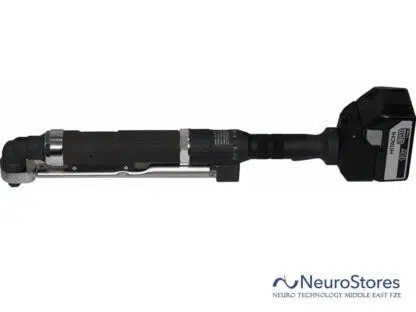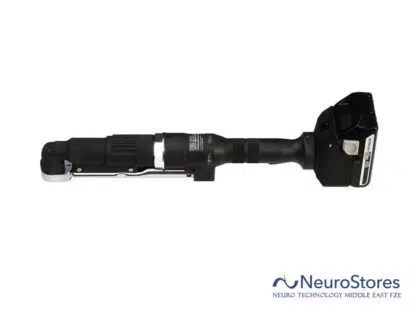TOHNICHI MANUFACTURING CO. LTD.
Tohnichi HA/HAC
For battery-charge type for excellent workability. Semi-automatic electric torque wrenches let you use your existing torque wrench tester for calibrating.
HAC100N battery-operated semi-automatic electric torque wrench (* Note: Shown attached to the optional large-capacity battery)
HA25N is a greater choice in our series lineup. Compact, lightweight (* shown connected to the optional lightweight battery)
Application:
- Cell production and assembly work on a sub-line
- Tightening Data Management System
- Provides evidence in the form of tightening torque data
Features:
- Far cheaper than an electric hand nutrunner, yet offers high precision torque control.
- Generally, provisional tightening is done with an electric screwdriver, and then final tightening is done with a torque wrench. But now both provisional and final tightening can be done with a single tool. With “No Wasted Time” there’s no need to switch tools.
- Provisional tightening is done with a labor-saving brushless electric motor. Final tightening can be done with a torque wrench with ±3% torque control accuracy.
- Maintenance-free! Uses a durable brushless motor, so there’s no need to ever change brushes.
- Cordless! A rechargeable battery powers the electric motor for provisional tightening. No power cable for DAC, so no worry about reduced workability or failure caused by a cut cable.
- Pokayoke (error proofing) is cordless too! Tightened-to-completion signals are transmitted by Bluetooth®, making it easy to build a Pokayoke system to prevent human tightening errors. Cordless operations result in excellent workability, with no worry about cords getting cut.
- No need for special controller connection. Cordless, so no worries when moving about on the production line, and no need to repair cords.
- Provisional tightening possible with three-step torque adjustment. With a Bluetooth®-equipped computer, setting software lets you change provisional tightening torque. (* Note: Software available for download free of charge.)
- The software lets you change tightening mode. The setting software can also switch from one mode to the other. Tightening mode 1: For provisional tightening that connects multiple flange bolts. Tightening mode 2: After provisional tightening, if final tightening is missed the next provisional tightening cannot be done. (* Note: Software available for download free of charge.)
- Able to calibrate with a torque wrench tester currently in use. No need for a special calibration device, so traceability at the control level is equal to that achieved with a torque wrench.
- The compact, lightweight HA25N was launched on the market on January 25, 2016.
- The HAQSPDY / HACQSPDY series that transmits tightening torque data wirelessly (Bluetooth (R)) can also be custom modified, and a system for managing tightening data can be built using the “TDMS / TDMSHT” (Ver. 2.00) that went on sale in March 2017.
- HA/HAC conforms to telecommunication standards in Japan, the U.S., Canada, Thailand, Taiwan, Mexico, Vietnam, Brazil, Russia, and Malaysia. R-BT conforms to telecommunication standards in Japan, the U.S., Canada, the EU, Thailand, Mexico, Vietnam, and Russia. (Information valid as of September 2019.) For other countries and regions, please contact Tohnichi.










